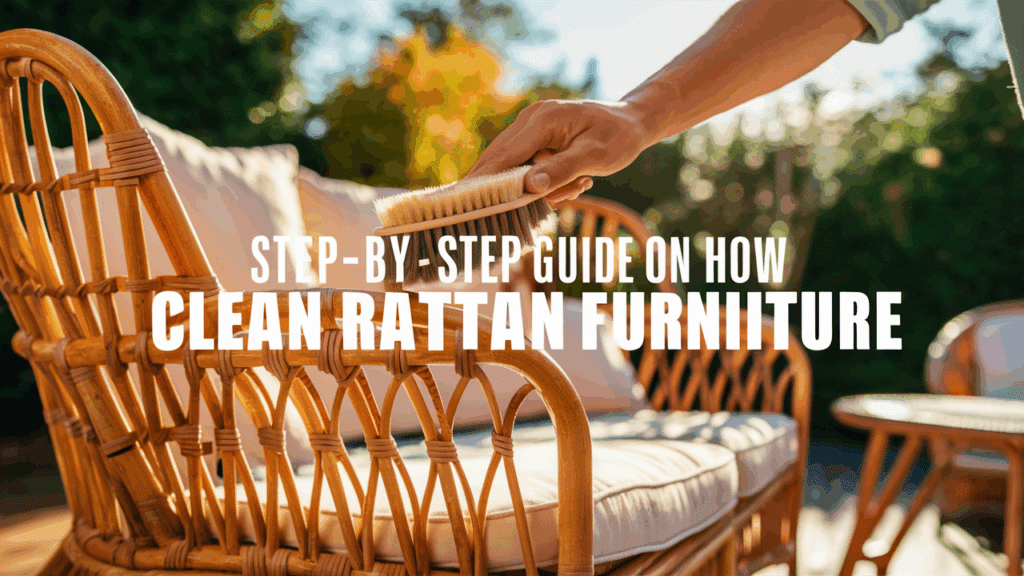Rattan furniture is a popular choice for its unique look and durability. However, it can easily lose its charm if not cleaned and maintained properly. In this article, we’ll walk you through a simple, step-by-step guide to cleaning your rattan furniture the right way. Whether it’s your living room chairs or outdoor patio set, we’ve got you covered.
By following these easy steps, you can keep your furniture looking great for years. You won’t need fancy products or expert skills—just a little time and the right technique.
We understand that keeping your furniture clean can feel overwhelming. That’s why we’re here to help. Our goal is to provide clear, straightforward advice to solve your cleaning problems without any confusion. Let’s get started!
Materials Needed
Before we dive into cleaning, let’s make sure you have everything you need. Don’t worry, it’s really simple! Having the right tools will make the job easier and faster. Here’s a list of what you’ll need:
Soft Cloths
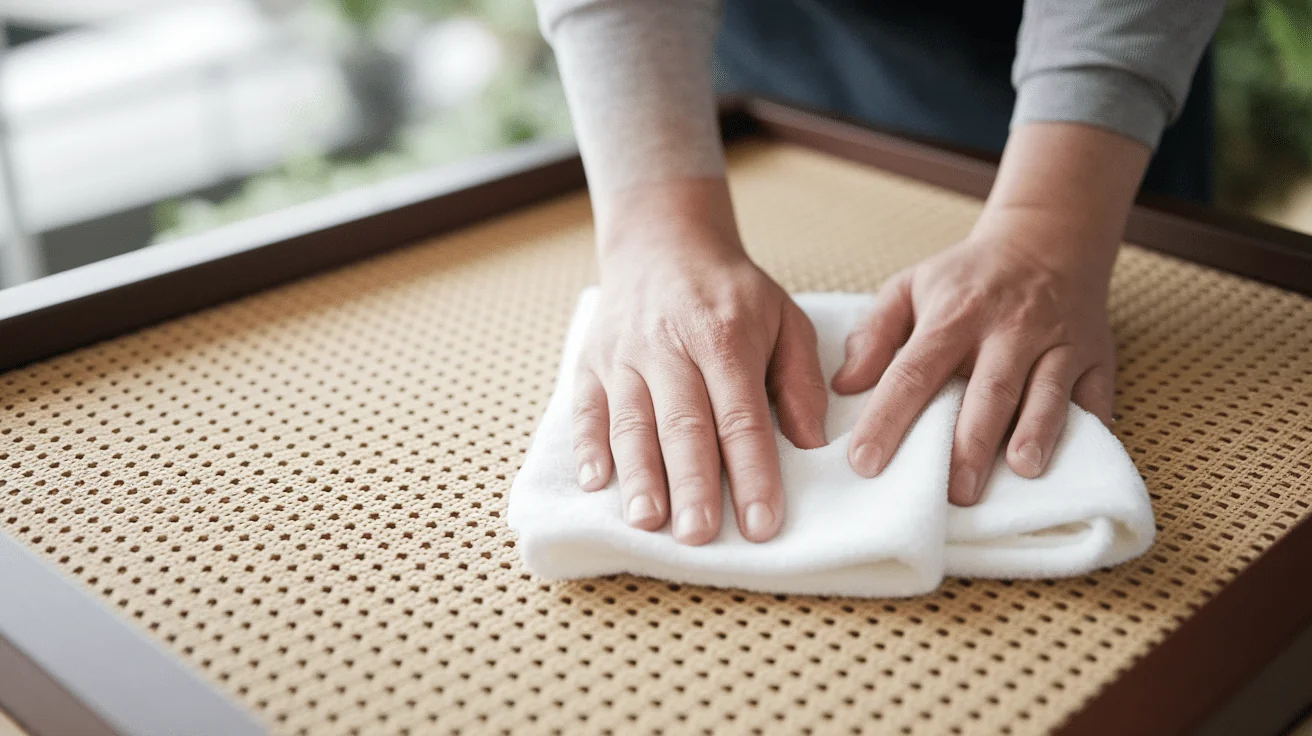
To wipe down your rattan furniture, you’ll need a few soft cloths. These help you clean without scratching or damaging the surface.
Please make sure they are clean and smooth, as rough cloths can leave marks. Microfiber cloths work well for trapping dust. Keep a couple of extra cloths on hand for drying.
A Soft-Bristle Brush
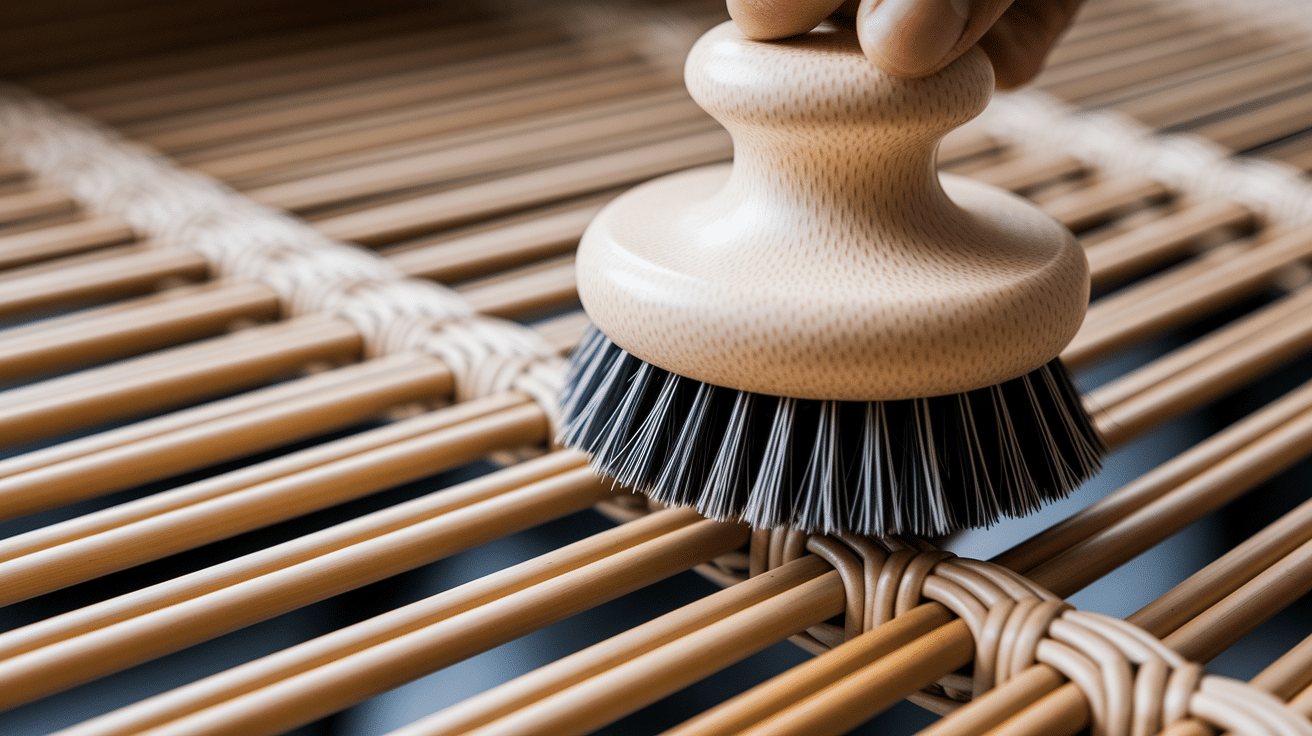
A soft-bristle brush is perfect for gently scrubbing the rattan. It can get into the cracks and crevices without causing damage.
Don’t use stiff brushes, as they can harm the delicate material. A brush with nylon bristles is a great choice, as this type of brush won’t wear down the finish over time.
Mild Dish Soap
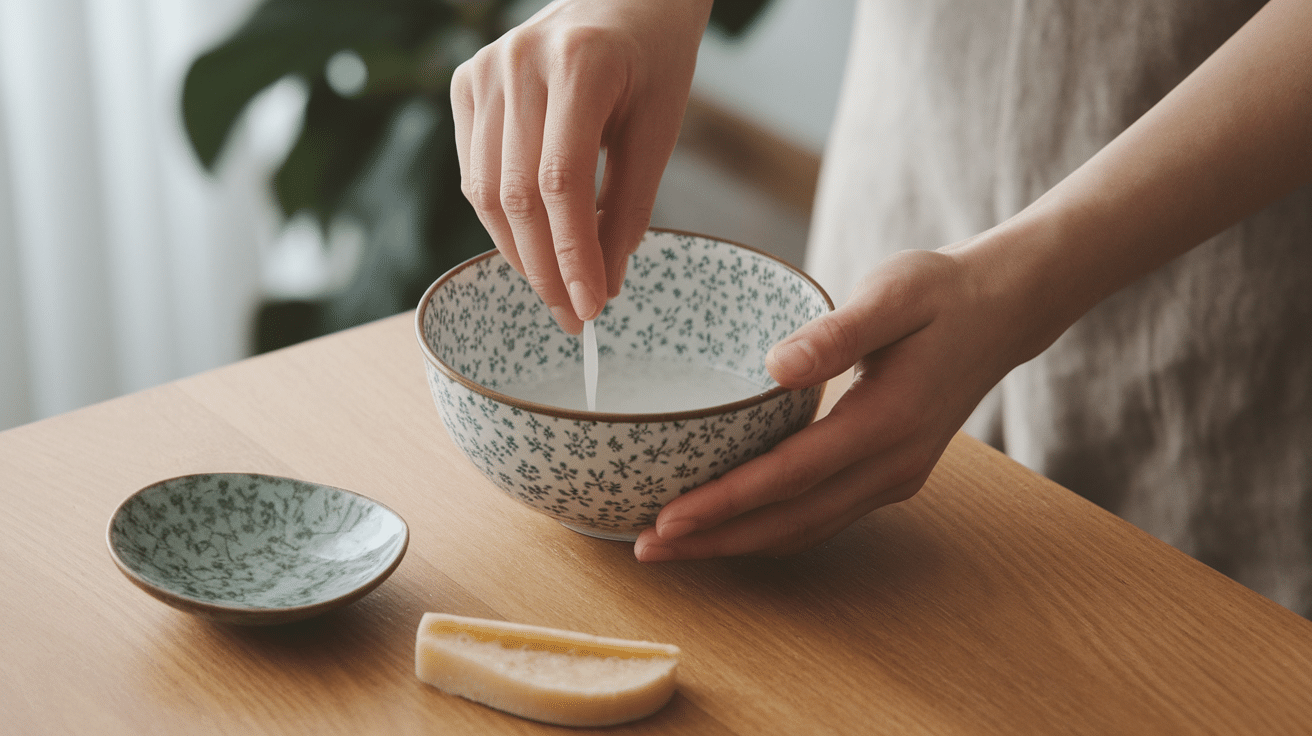
Mild dish soap is all you need to clean your rattan. Avoid harsh chemicals that could damage the furniture. A little dish soap mixed with warm water is enough to break down dirt and grime without hurting the finish.
It’s gentle on the rattan and doesn’t leave any residue. Just be sure to dilute it well, so it isn’t too soapy.
Warm Water
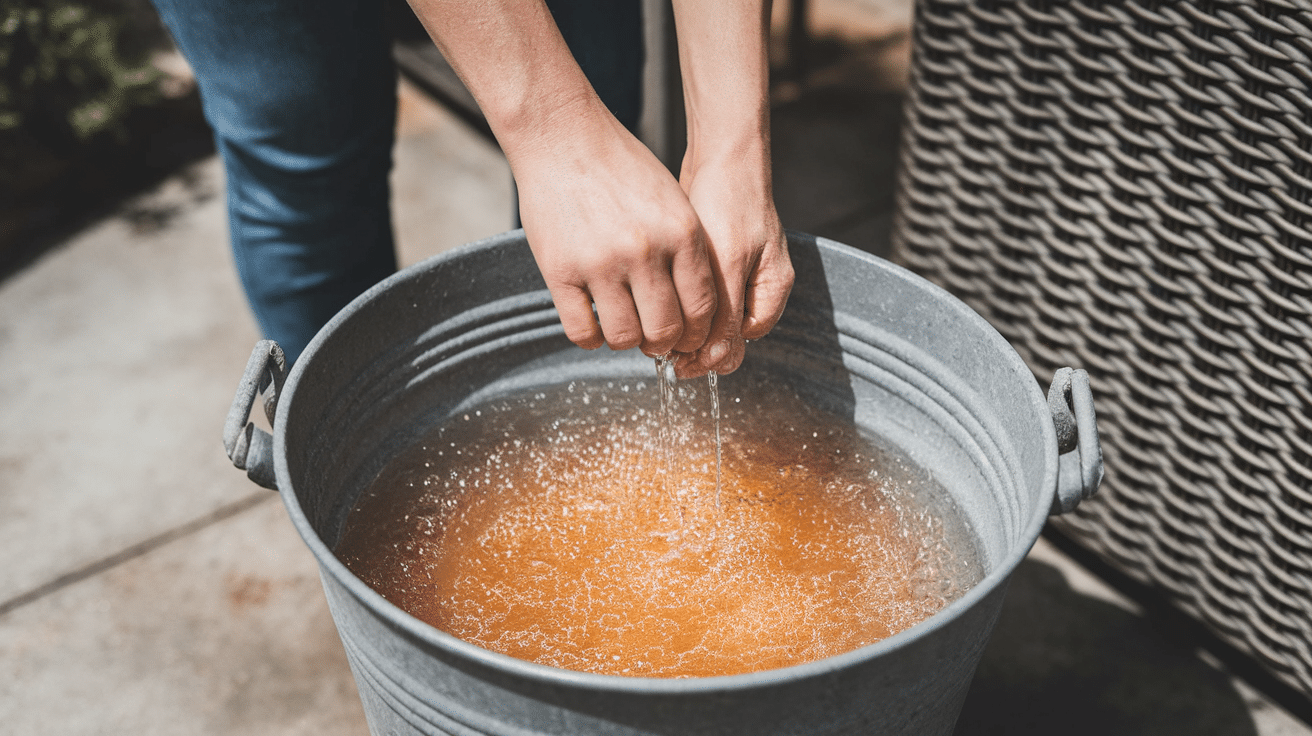
You don’t need boiling water; just warm water will do the job. Warm water helps to loosen dirt and makes the soap cleaner. Be careful not to use hot water, as it can weaken the rattan fibers.
This also makes it easier to rinse off the soap later. Just check that the water is comfortably warm to the touch.
A Vacuum with Brush Attachment
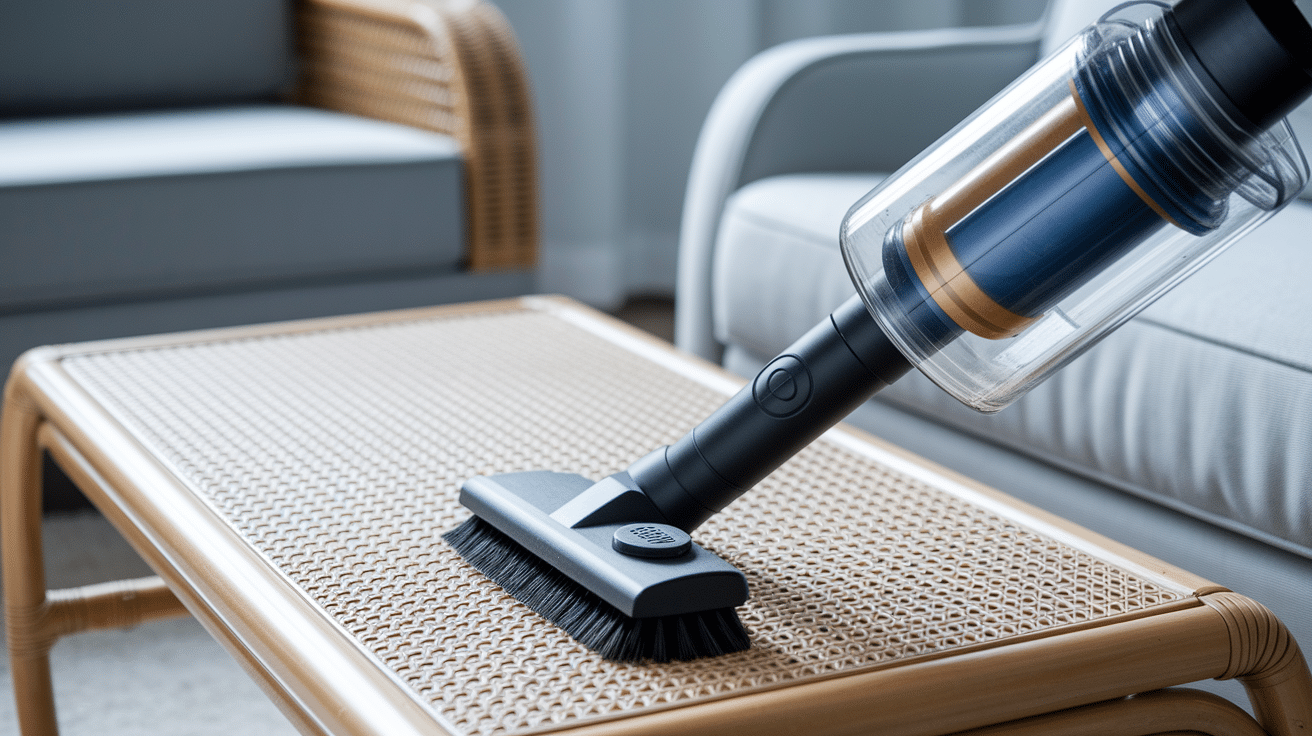
If your furniture has a lot of dust or loose debris, a vacuum with a brush attachment is a great tool. It can gently clean the surface and remove any particles that might be stuck between the rattan strips, making the cleaning process much smoother.
The brush attachment is softer than regular vacuum nozzles, so it won’t damage the furniture. Use it before you start scrubbing to get rid of large debris.
That’s all you need! These basic tools will help keep your rattan furniture in great shape. Now that we have everything, we’re ready to start cleaning!
Step-by-Step Cleaning Guide
Now, let’s walk through the cleaning process. Each step is easy, and I’ll guide you through it.
Prepare the Furniture
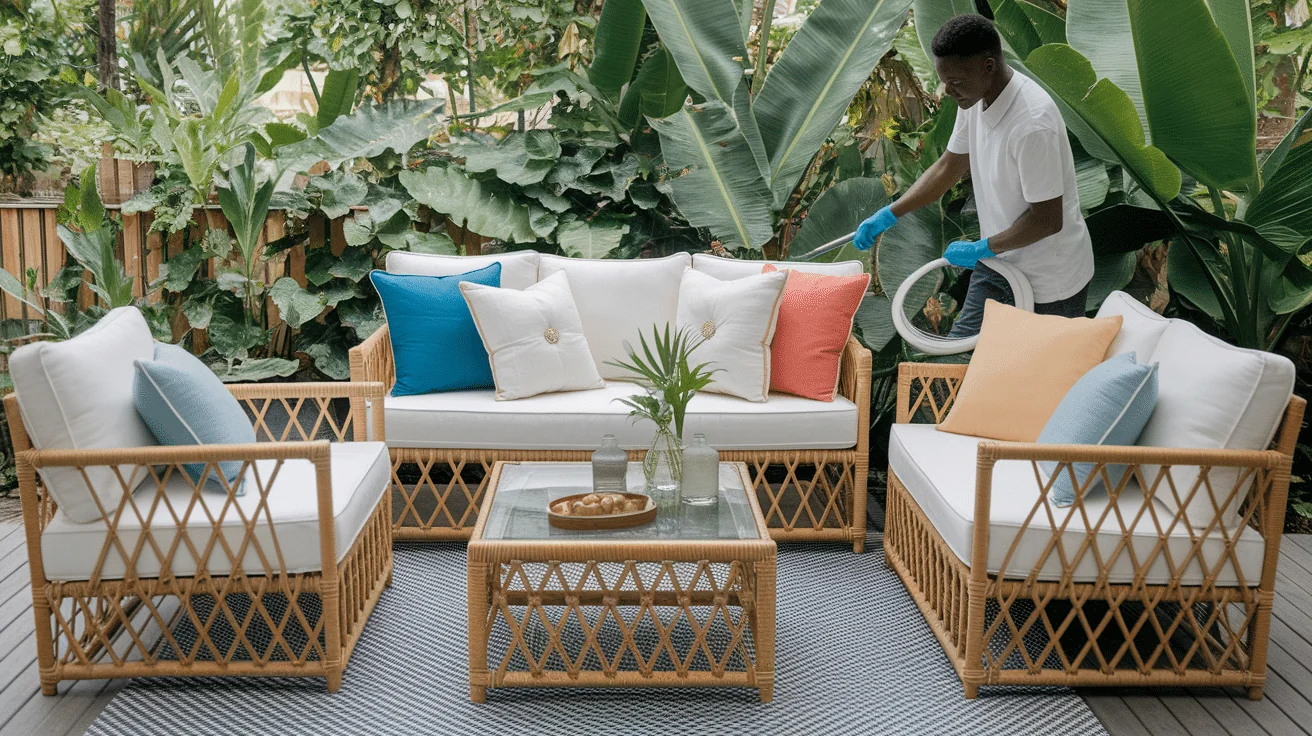
Before cleaning, we need to clear the area. Remove cushions and accessories. Take off all the pillows and set them aside in a safe spot. You don’t want them to get wet or covered in soap.
Then, remove any decor or items on the furniture. This will give you full access to the rattan and prevent anything from getting in the way while you clean.
Dust and Debris Removal
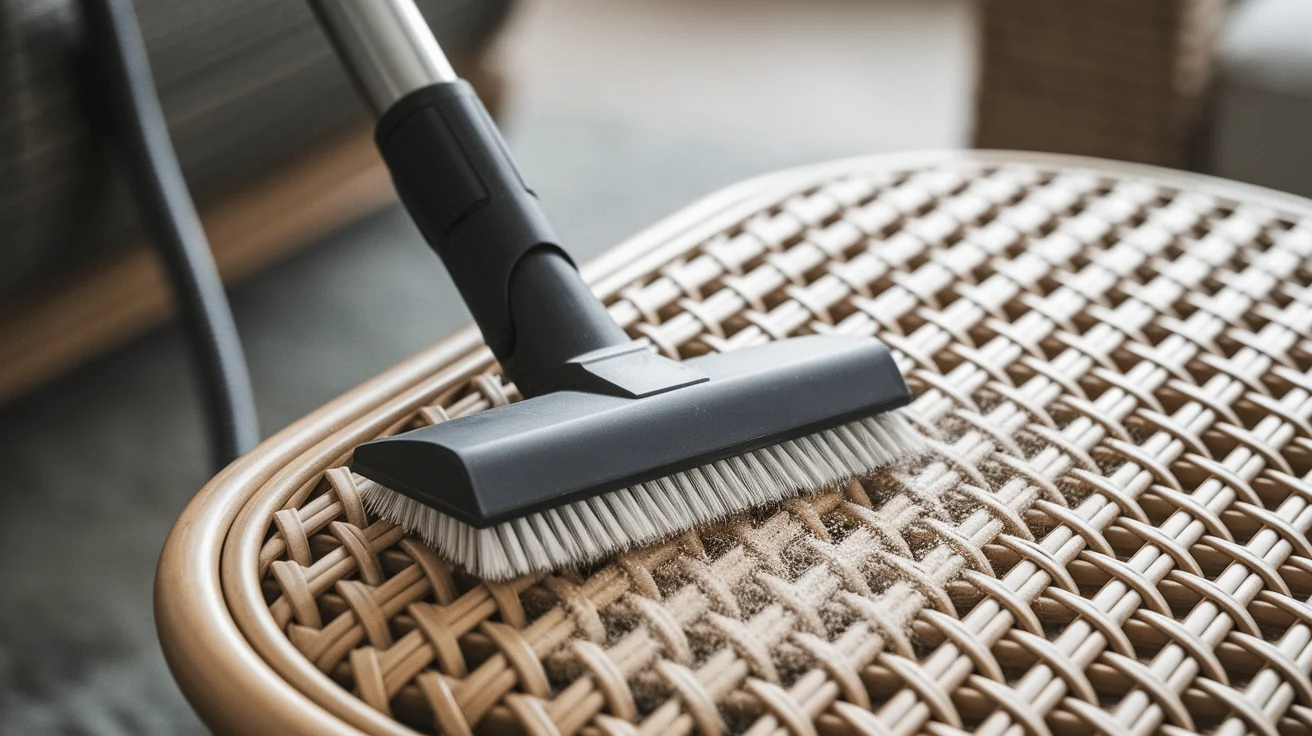
Now that the furniture is cleared, it’s time to remove surface dirt. You can use a soft brush or a vacuum with a brush attachment. Gently brush or vacuum over the rattan.
This will remove dust, crumbs, or any other small debris. Take your time here. You don’t want to miss anything, especially dirt trapped in the cracks. Afterward, you’ll have a clean base to work with for the next steps.
Cleaning Solution Preparation
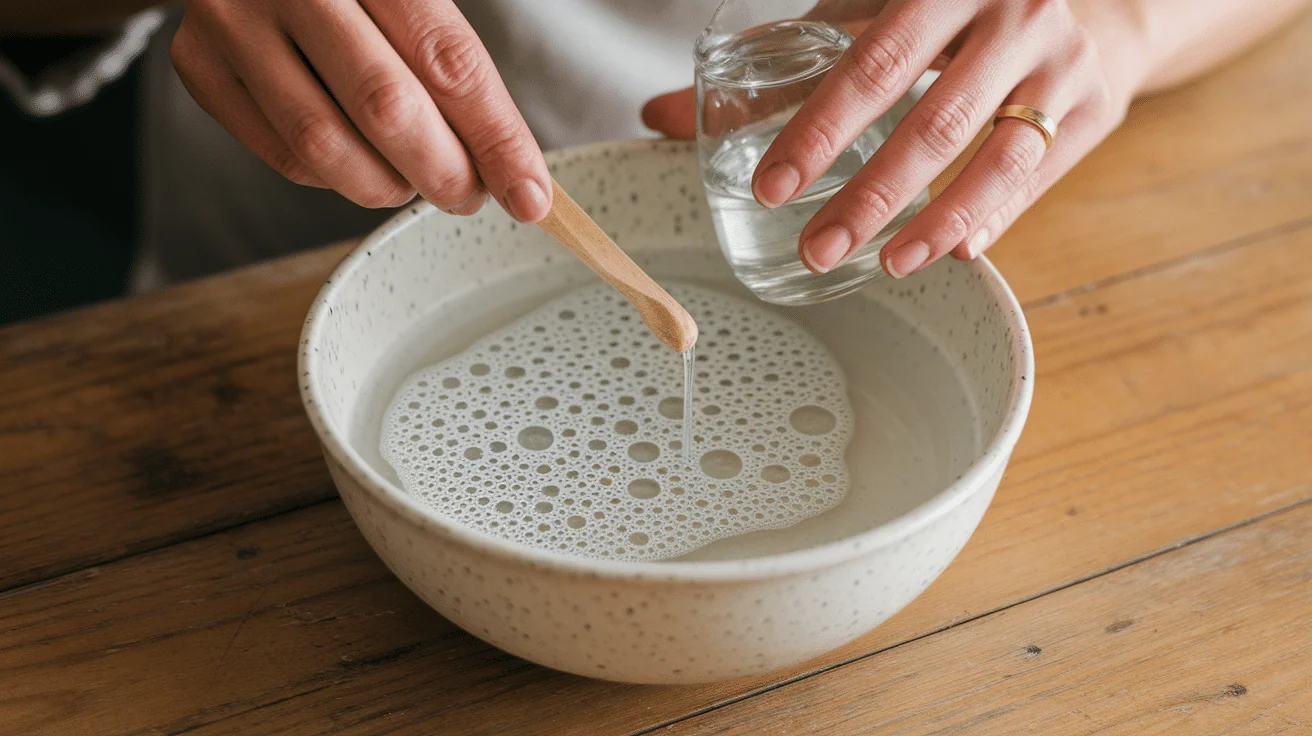
Let’s make our cleaning solution. Mix warm water with mild dish soap. You don’t need much soap—just a small amount will do. Stir it until it’s bubbly. This solution will help clean the rattan without harming it.
If you want a deeper clean, you can add a tiny bit of vinegar, but be careful not to use too much. This simple solution works wonders without being harsh on the furniture.
Washing the Furniture
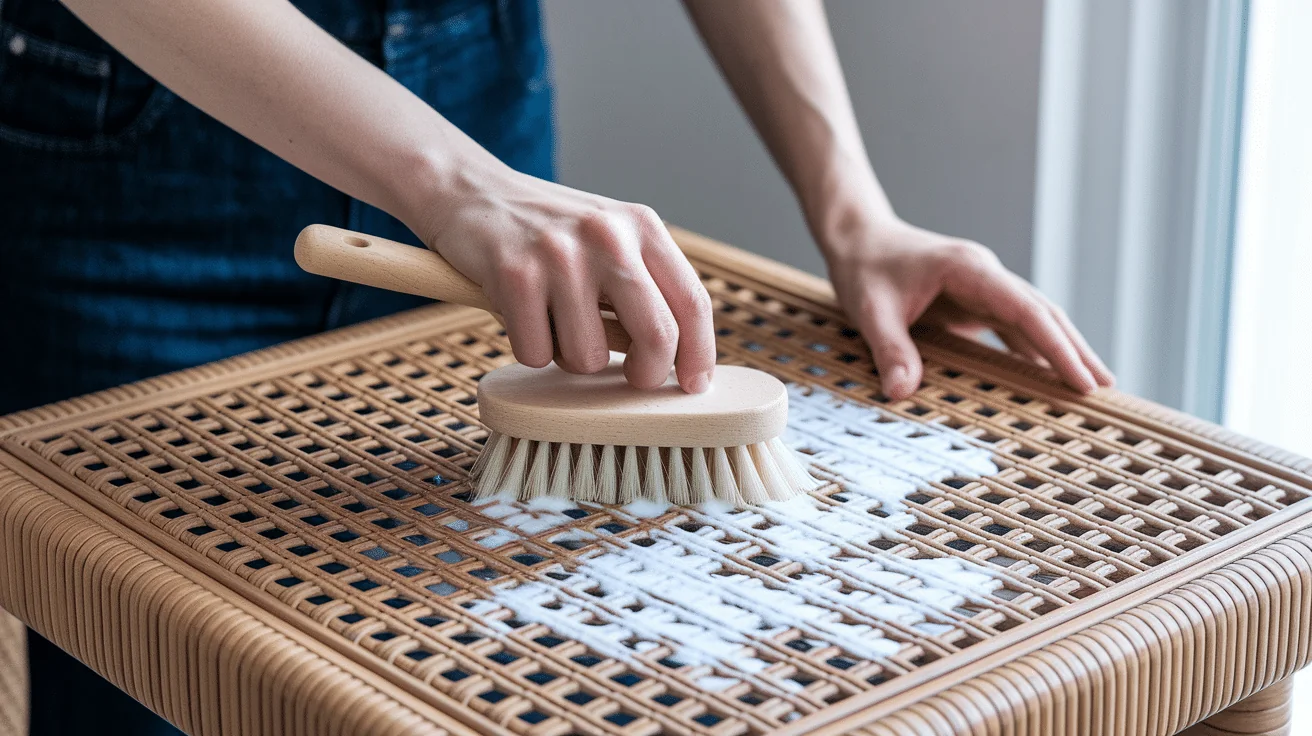
Next, dip a soft-bristle brush into the soapy water. Gently scrub the rattan. Work in small sections, making sure you clean every part. Be careful not to scrub too hard, as rattan can be delicate.
Focus on areas with visible dirt, but don’t forget the corners and cracks where dirt likes to hide. Take your time to make sure you cover every part of the furniture.
Rinsing

Once you’ve cleaned a section, wipe it down with a clean, damp cloth. This will remove any soap residue. Make sure you get all the soap off to avoid any buildup.
If needed, rinse the cloth and wipe again to ensure the rattan is fully clean. This step is important because soap left behind can attract dust, leaving the furniture looking dirty faster.
Drying
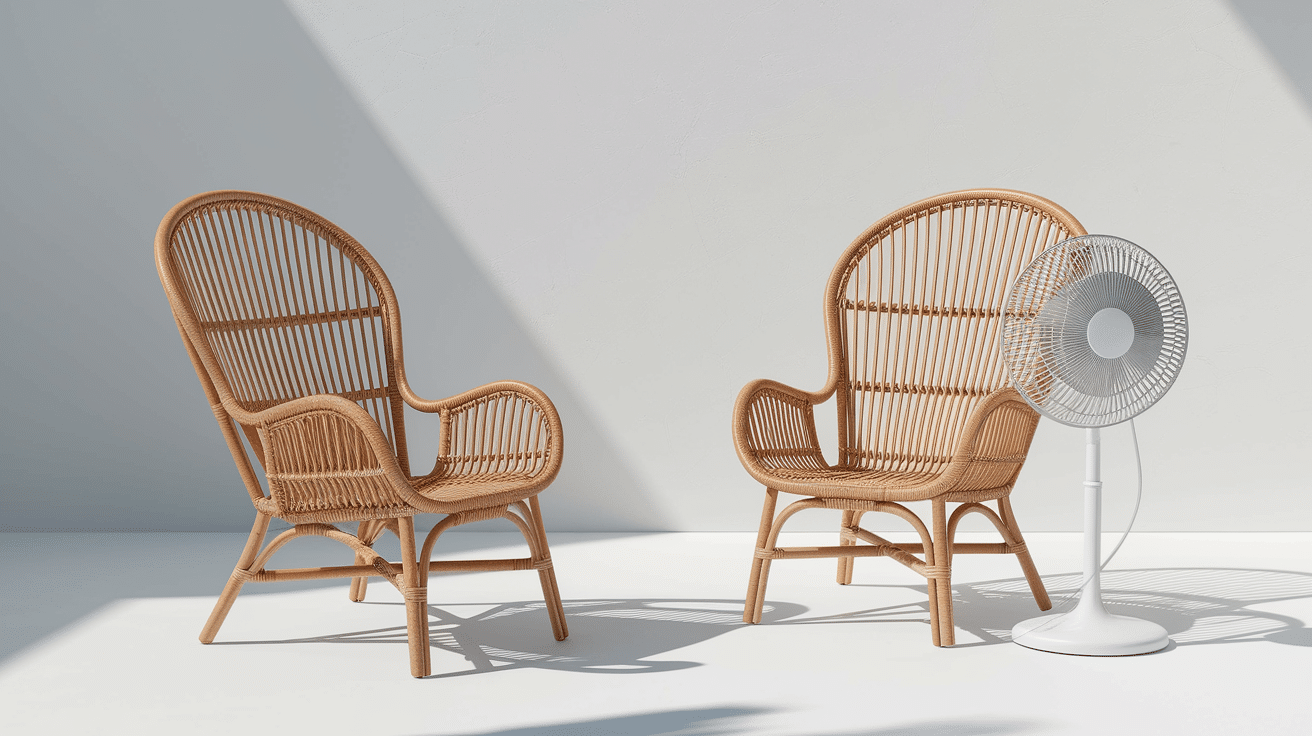
Finally, let the furniture air dry completely. Avoid direct sunlight, as it can damage the rattan over time. Just leave it to dry naturally, and your furniture will be fresh and clean.
If you’re in a hurry, you can use a fan to speed up the drying process. However, don’t rush this step—let the furniture dry thoroughly to prevent moisture buildup.
That’s it! You’ve cleaned your rattan furniture and helped it stay in great shape. Now, it’s ready to be enjoyed again.
Tips for Maintaining Rattan Furniture
Now that you’ve cleaned your rattan furniture, let’s talk about how to keep it looking great. It’s all about regular care and protecting it from damage.
Regular Dusting and Spot Cleaning
Dusting your furniture is simple but important. Make it a habit to dust your rattan every week. Use a soft cloth or a small brush to remove dust before it builds up.
For spots or stains, clean them as soon as you notice them. Don’t wait too long—the longer dirt sits, the harder it is to remove.
Protecting Furniture from Harsh Weather Conditions
If your rattan furniture is outdoors, it’s important to protect it from the weather. Rain, snow, and direct sunlight can cause rattan to weaken and fade.
Try to move your furniture to a covered area or under a patio umbrella. If that’s not possible, use a protective cover. This will help shield your furniture from the elements and keep it in good shape.
Using Furniture Covers When Not in Use
When you’re not using your rattan furniture, cover it up. Furniture covers are a great way to protect your furniture from dust, dirt, and moisture.
Whether it’s inside or outside, covering your furniture will keep it looking fresh. It’s an easy step that makes a big difference in the long run.
By following these simple tips, your rattan furniture will stay in great condition for years. Just a little care goes a long way!
Conclusion
In this article, I’ve shared a simple, step-by-step guide on how to clean your rattan furniture. From preparing the furniture to drying it properly, I’ve covered everything you need to know.
By following these steps, you can keep your furniture looking fresh and lasting longer. Regular cleaning and maintenance will prevent dirt buildup and protect the material. It’s easy to do, and it makes a big difference.
Trust these methods because they work. With just a little effort, you can enjoy your rattan furniture for years. Don’t wait—take care of it today and keep it looking its best!
Frequently Asked Questions
How Often Should I Clean My Rattan Furniture?
Clean your rattan furniture every 2-3 months, or more often if it’s exposed to dirt or weather. Regular dusting can help maintain its look between cleanings.
Can I Use Bleach to Clean Rattan Furniture?
No, bleach can damage the rattan fibers and cause discoloration. Stick to mild dish soap and water for cleaning.
Is Rattan Furniture Safe for Outdoor Use?
Yes, but you should protect it from harsh weather. Use covers or store it in a sheltered spot when not in use.
Can I Use a Pressure Washer on Rattan Furniture?
No, pressure washers are too harsh. They can damage the rattan. Instead, gently clean it with a soft brush and soapy water.
How Do I Remove Stubborn Stains from Rattan?
For stubborn stains, gently scrub with a mixture of water and vinegar. Avoid harsh chemicals, as they can damage the finish.

